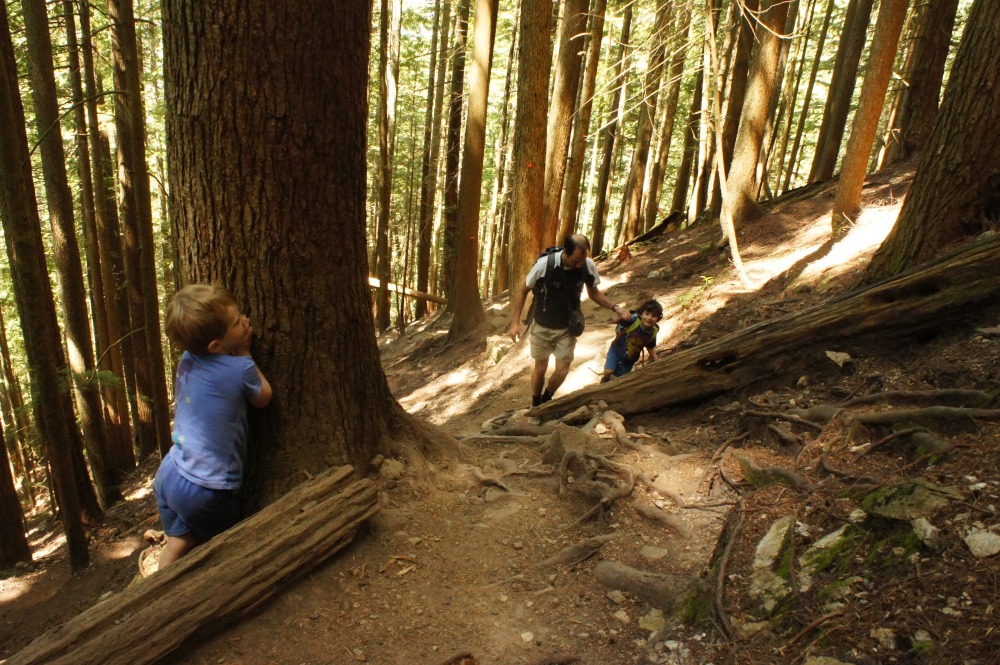
BCMC Trail: How to Get Kids to Go Farther

Do we hold our children back by making assumptions about their abilities? I think we do, at least some of the time. Our four year old son Neil recently cycled 30 kms, despite us urging him repeatedly to ride the cargo bike part of the way. This really surprised me and got me thinking. Perhaps by steering clear of experiences that challenge our kids’ comfort zone, we don’t allow them to discover where their limits are, nor to expand them. If we accept that, the natural question is: how to get kids to go farther?
Leading up to this trip, I was curious to know where Neil’s hiking limits are. After pointing out Grouse from the beach, and seeing it in a book, he’d been asking to go there for a while. With this in mind, we set out to hike the BCMC trail, which is short but steep, about 850 m elevation gain over 3 kms. I figured he could probably do it and enjoy it, at least under the right conditions, and indeed, he did… I tried to create the right conditions to increase the odds that that would happen.
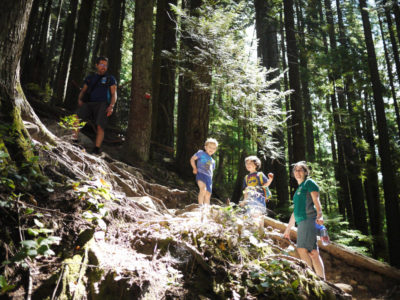
The most important overall principle to keep in mind is that if it’s not fun, your child (probably) won’t want to do it again. Sure, we as adults know the satisfaction of Type II Fun – not fun while doing it, but fun in retrospect. It might be too early and risky to introduce this concept. Try to adopt a playful, fun mood, sing songs, tell stories, play games, or whatever your child would find fun.
Here are a few thoughts on how to get kids to go farther, based on this trip and others, as well some ideas from friends. Of course, this is what worked for us, for a four year old, and it might not work for you. Listen to the kids, and be responsive, respectful and flexible.
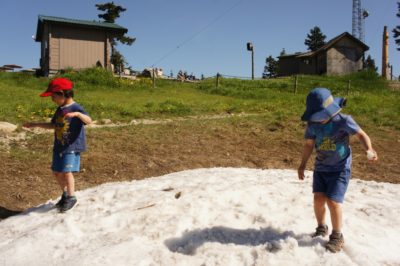
1. Not too hard and not too easy
If you want to help your child expand their limits, you’ll need to carefully choose the route and other details of the trip. Too hard, and they might get so frustrated that they won’t try something similar again. Too easy is fine for most days, but won’t help them to discover and push their limits. If it’s obvious to them and you that they’ll be able to do it, it’s probably too easy. If more than double the distance, elevation gain or time of what they have done in the past, there’s a decent chance it will be too hard for them.
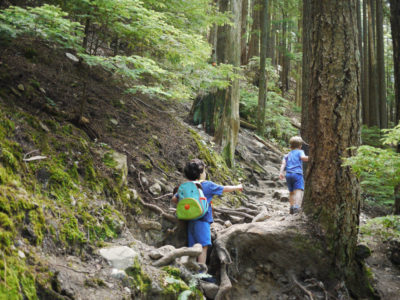
2. Bring friends
Having other kids that your kids get along with, can make many experiences far more fun. For this hike we invited our friends and their son, who is about Neil’s age. When one of the kids slowed down or was feeling a bit tired, I noticed how seeing the other child hiking up ahead motivated them. During breaks, it gave them someone to play with, at their same level.
3. Do your homework or go somewhere you know
Not getting lost will be very helpful in keeping things under control, unless the objective of the exercise is to experience being lost… I had been up the BCMC trail before, the signage is good, and it’s pretty hard to get lost.
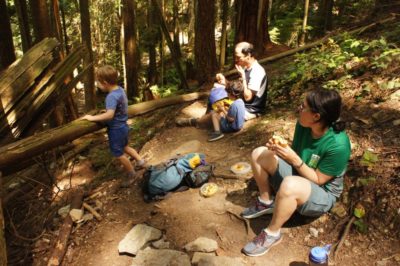
4. Basic needs
Take care of your child’s basic needs – make sure they are well hydrated, dry, not too hot and not too cold, eating and peeing. In the excitement of adventure, they might forget to take care of these things, so I’d suggest to keep reminding them. Ideally they will have slept enough the night before and/or napped on the way, and if not, consider rescheduling or changing the plans.
5. Take preemptive breaks
Consider taking a break even if no one has asked for it, if enough time/energy has gone by since your last break. Avoid complete exhaustion – it’s better to rest a bit more every now and then, than try to get an exhausted kid back on the horse. When you stop for a break, try to take care of as many upcoming needs as possible – eating, drinking, and resting, but also peeing, changing layers, applying sun screen or bug spray, and so on.
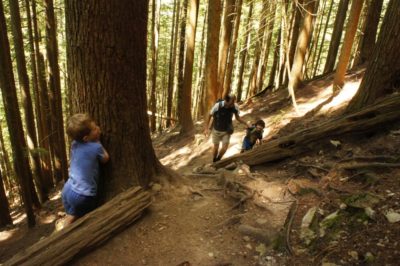
6. Play games, tell stories, or sing songs
Games are a very effective way to motivate kids to do something that they might not otherwise want to do. It’s the art of distraction. We often play hide and seek or pretend we are going to put out a fire up the trail. On a recent trip we noticed a lot of slugs on the trail, so we played “spot the slug”. Try to devise games that keep everyone on route and progressing along it.
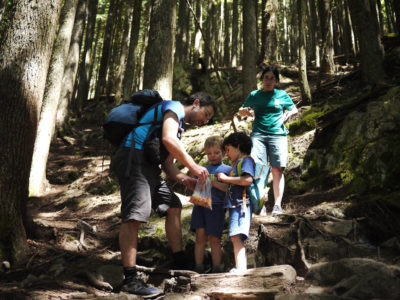
7. Boosters
Games and such distractions will only get you so far. To keep pushing ahead when your child is starting to feel a bit tired or weak but it’s not time for a full-on break, bring some boosters. These could be sweet or salty, and should be something they can eat while moving. We’ve used gummy sours or gummy bears, small pieces of a Clif Bar, and even a peperoni sausage. Keep them accessible, so that you can whip them out, and then get back to moving soon after.
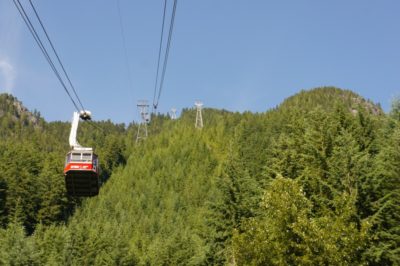
8. Bonus at the end
Something interesting at the end of the trip or in the middle, could help excite the kids. In our case it was the thought of a gondola ride down. On another hike it was having hot chocolate on the summit.
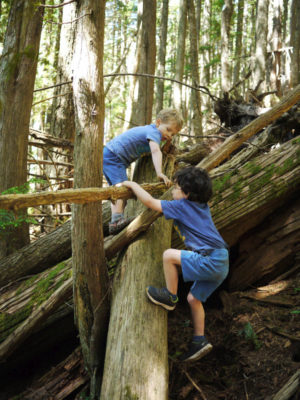
9. A different way back
Doing a there and back trip can be more challenging mentally. Consider finding another way back. It could be a loop hike, or maybe you can get a ride back with a friend or catch public transport back from a different point. On this trip we used the Grouse gondola to get back down, which allowed us to avoid hiking down the steep trail, which has loose sections and lots of roots. It would probably have been too much to go up and down for our first try.
10. Time to play
Kids need plenty of play time every day. If you’ve stopped to rest, try to allow them some time to play, if they want to. This is a wonderful opportunity to play in a natural environment. On our trip the kids went slightly off the trail and built a “bridge” from a log that they carried together.
11. Failure is ok
Learning to fail gracefully, and shrug it off, is an important life skill. Didn’t make it this time? Try something a bit easier first, and then come back, or just give it another try another time. Make sure to have a backup plan for this – it could be as simple as turning around if you don’t make it to the half point.
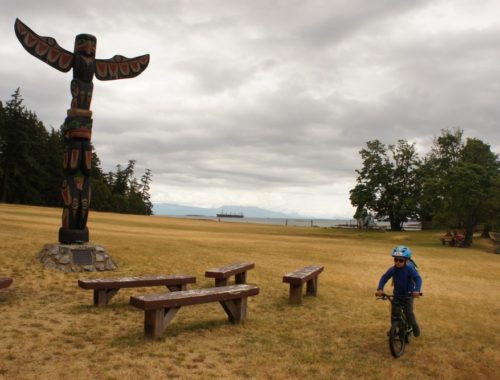

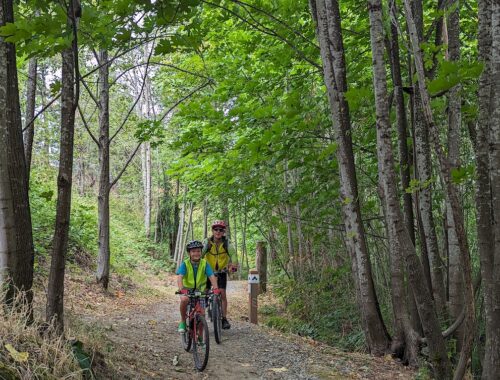
2 Comments
greenglobaltrek
This is such a thoughtful post it makes my heart sing. I remember very well those days of doing activities with 2 or 3 little ones and about all the fore thought that goes into a successful activity/trip. Best is if kids naturally enjoy what we enjoy. When they are really little, they have no choice of course, but later on they get to decide and then it’s interesting as some times those interests can be different. For example when Josh was little, he had no interest in a soccer ball as a little tyke, much to his dad’s disappointment. Much later he loved soccer, but initially he was way more interested in leaves and flowers. Oren was into anything that involved a ball from a super early age and he could throw further than most kids, even older ones, starting at about 3.
I really like point numbers 10 and 11 in your post. Fabulous photos. Neil always quite the trooper. One thought for consideration.. I found that snacks with sugar made my kids hyper and more prone to melt downs. I used to take apples along, and a knife to cut them, carrots pre cut, pretzels, natural granola bars, that kind of thing. They were still a good motivation. But I can see where a bonus of gummy bears could be more motivating for a kid haha.
Fantastic post. Great tips and suggestions here.
Peta
Gili
Thanks! Yes, one definitely has to take each kid’s personality and temperament into account. Agreed about the high and low that come with sugar consumption. In this case, since it’s just one little sweet at a time, and fairly infrequent, and he’s burning the sugar immediately, it doesn’t seem to be a problem. Either way, it’s good to use moderation with these. Funnily enough Neil actually takes pride in doing hard feats without “boosters”… Fruit, fresh or dry, is worth a try. Lately I’ve dried mangoes, apples, and pears, and we’ve used them for a longer snack, but not as “boosters” (yet).